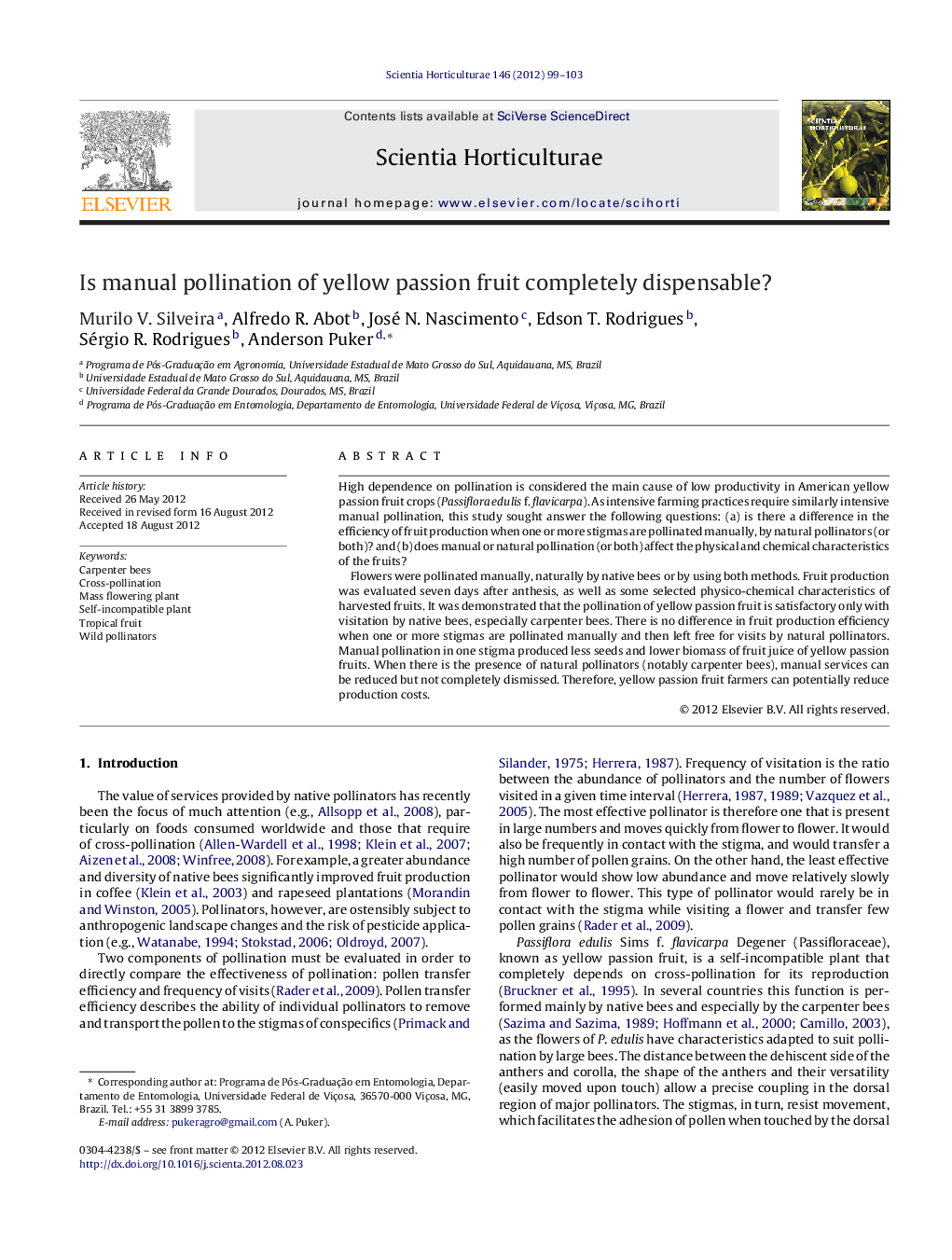| Article ID | Journal | Published Year | Pages | File Type |
|---|---|---|---|---|
| 4567590 | Scientia Horticulturae | 2012 | 5 Pages |
High dependence on pollination is considered the main cause of low productivity in American yellow passion fruit crops (Passiflora edulis f. flavicarpa). As intensive farming practices require similarly intensive manual pollination, this study sought answer the following questions: (a) is there a difference in the efficiency of fruit production when one or more stigmas are pollinated manually, by natural pollinators (or both)? and (b) does manual or natural pollination (or both) affect the physical and chemical characteristics of the fruits?Flowers were pollinated manually, naturally by native bees or by using both methods. Fruit production was evaluated seven days after anthesis, as well as some selected physico-chemical characteristics of harvested fruits. It was demonstrated that the pollination of yellow passion fruit is satisfactory only with visitation by native bees, especially carpenter bees. There is no difference in fruit production efficiency when one or more stigmas are pollinated manually and then left free for visits by natural pollinators. Manual pollination in one stigma produced less seeds and lower biomass of fruit juice of yellow passion fruits. When there is the presence of natural pollinators (notably carpenter bees), manual services can be reduced but not completely dismissed. Therefore, yellow passion fruit farmers can potentially reduce production costs.
► There is no difference in fruit production efficiency when one or more stigmas are pollinated manually and then left free for visits by natural pollinators. ► When there is the presence of natural pollinators, manual services can be reduced but not completely dismissed. ► Therefore, yellow passion fruit farmers can potentially reduce production costs.
